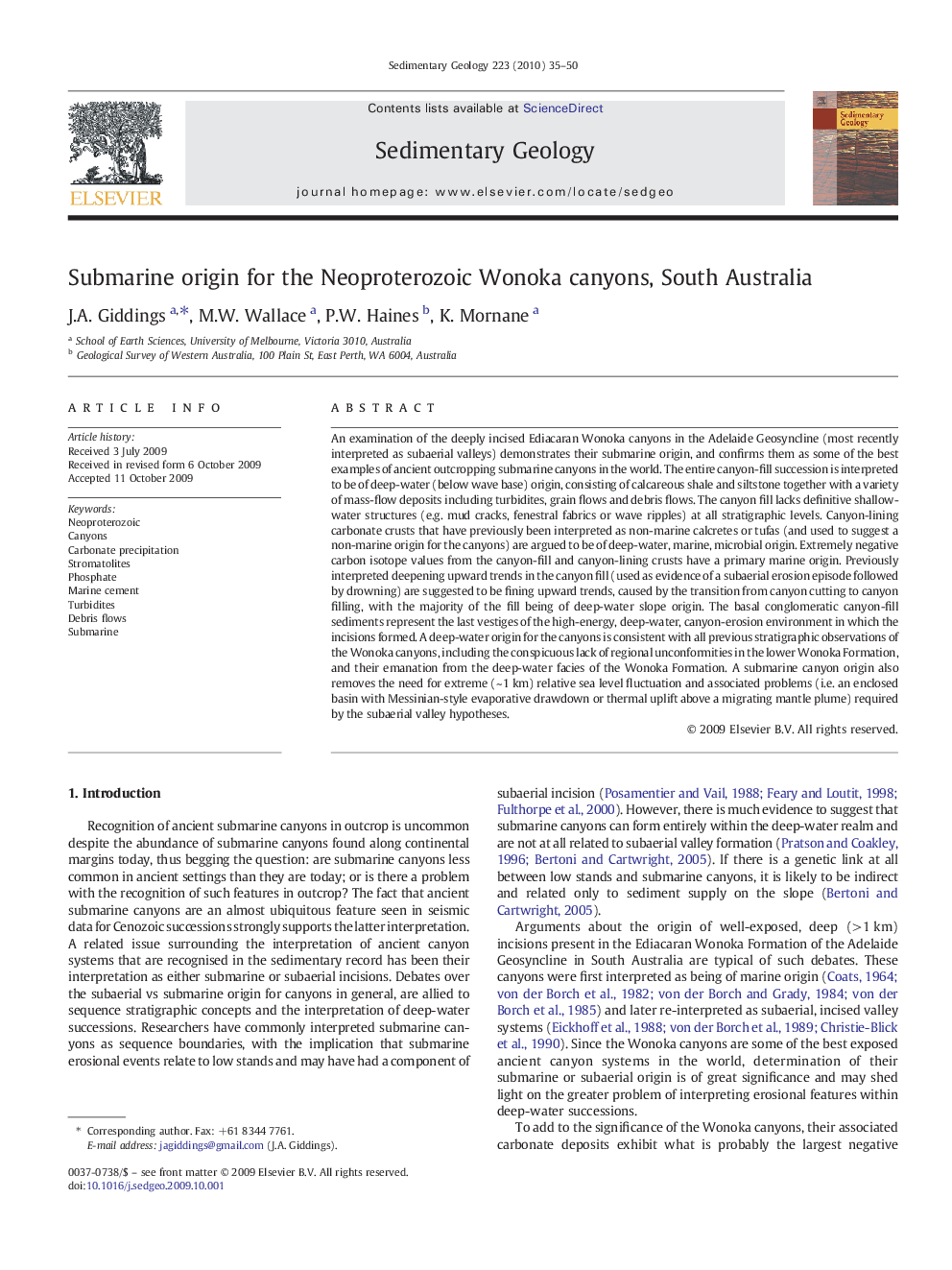| کد مقاله | کد نشریه | سال انتشار | مقاله انگلیسی | نسخه تمام متن |
|---|---|---|---|---|
| 4690341 | 1636131 | 2010 | 16 صفحه PDF | دانلود رایگان |

An examination of the deeply incised Ediacaran Wonoka canyons in the Adelaide Geosyncline (most recently interpreted as subaerial valleys) demonstrates their submarine origin, and confirms them as some of the best examples of ancient outcropping submarine canyons in the world. The entire canyon-fill succession is interpreted to be of deep-water (below wave base) origin, consisting of calcareous shale and siltstone together with a variety of mass-flow deposits including turbidites, grain flows and debris flows. The canyon fill lacks definitive shallow-water structures (e.g. mud cracks, fenestral fabrics or wave ripples) at all stratigraphic levels. Canyon-lining carbonate crusts that have previously been interpreted as non-marine calcretes or tufas (and used to suggest a non-marine origin for the canyons) are argued to be of deep-water, marine, microbial origin. Extremely negative carbon isotope values from the canyon-fill and canyon-lining crusts have a primary marine origin. Previously interpreted deepening upward trends in the canyon fill (used as evidence of a subaerial erosion episode followed by drowning) are suggested to be fining upward trends, caused by the transition from canyon cutting to canyon filling, with the majority of the fill being of deep-water slope origin. The basal conglomeratic canyon-fill sediments represent the last vestiges of the high-energy, deep-water, canyon-erosion environment in which the incisions formed. A deep-water origin for the canyons is consistent with all previous stratigraphic observations of the Wonoka canyons, including the conspicuous lack of regional unconformities in the lower Wonoka Formation, and their emanation from the deep-water facies of the Wonoka Formation. A submarine canyon origin also removes the need for extreme (~ 1 km) relative sea level fluctuation and associated problems (i.e. an enclosed basin with Messinian-style evaporative drawdown or thermal uplift above a migrating mantle plume) required by the subaerial valley hypotheses.
Journal: Sedimentary Geology - Volume 223, Issues 1–2, 1 January 2010, Pages 35–50